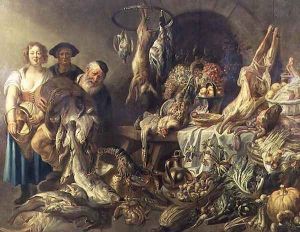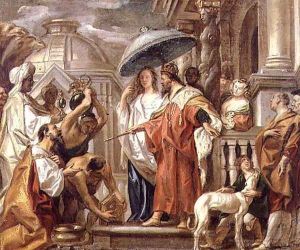J. & Utrecht, A. Jordaens Paintings
Jacob Jordaens and Adriaen van Utrecht were prominent figures in the Flemish Baroque painting and still life genre, respectively. While they were contemporaries, their contributions to art history were distinct, each leaving a unique mark on the development of European art during the 17th century.
Jacob Jordaens, born in 1593 in Antwerp, was one of the three notable Flemish Baroque painters, alongside Peter Paul Rubens and Anthony van Dyck. Unlike his contemporaries who traveled extensively in Italy to study Italian masters, Jordaens primarily remained in Antwerp for most of his career, drawing heavily from the local culture and traditions for his compositions. He was known for his dynamic, high-spirited works, often filled with robust, earthy figures in energetic compositions. His themes frequently revolved around mythological and biblical subjects, as well as genre scenes depicting everyday life. Jordaens succeeded Rubens as the leading painter in Antwerp after the latter's death in 1640. His work is characterized by a vigorous and bold realism, with a particular talent for depicting lifelike expressions and emotions.
Adriaen van Utrecht, born in 1605 in Antwerp, was a Flemish Baroque painter known for his elaborate still lifes and animal scenes. His work often depicted sumptuous banquet tables laden with exotic fruits, luxurious objects, and dead game, reflecting the opulence of the time. Van Utrecht was particularly adept at rendering textures and surfaces, making his compositions rich in detail and realism. He traveled to Italy, Germany, and France, where he was influenced by the work of other artists, which he incorporated into his own distinctive style. His paintings are celebrated for their meticulous attention to detail and their ability to convey the material abundance and wealth of the 17th-century Flemish society.
Though Jordaens and van Utrecht pursued different artistic paths, their works collectively embody the vibrancy and richness of Flemish Baroque art. Jordaens' narrative-driven paintings and van Utrecht's detailed still lifes offer a comprehensive view of the era's artistic achievements. Their legacy is preserved in major museums around the world, where their masterpieces continue to captivate audiences with their beauty and historical significance.

